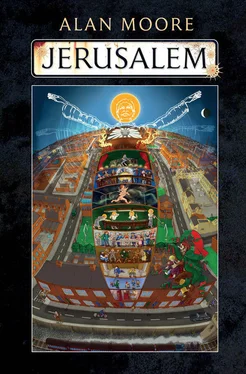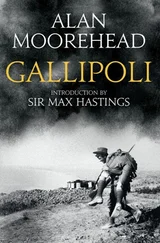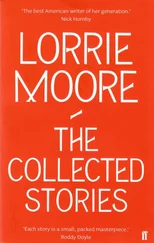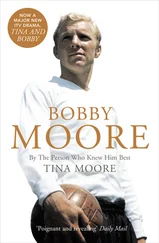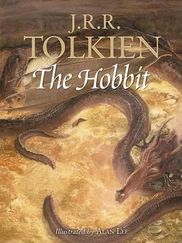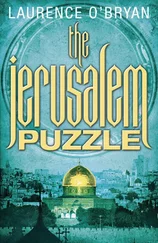For Henry and Selina, nearer to the turnpike of the twentieth century, what happens next is that they send their several children off to Spring Lane School that’s right across the street from where they live, crowded amidst the mess of public houses, businesses and homes all fitted in a huddle there between Spring Lane and Scarletwell Street. When he cycles out upon his rope-wheeled chariot to look for odds and ends each morning Henry likes to hear the boys and girls all giggling and shrieking in their playground that’s away behind the red brick schoolhouse somewhere, if it happens to be the right time of day. He’ll be coasting on down towards Saint Andrew’s Road that’s got the railway track beyond it, past The Friendly Arms, the little shops and houses, and he’ll listen for the youngsters kicking up a noise to see if he can pick out his own offspring’s voices from amongst them. Far as Henry knows, his and Selina’s kids are the first ones of any colour at the school, but still they never hear about no bullying or teasing, or at least none that’s about their skin. On more than one occasion when he struggles up Black Lion Hill into Marefair with the lit-up shop windows, or he coasts down Bath Street where they got that big dark chimney — that Destructor — it occurs to Henry that despite appearances him and Selina picked exactly the right place to raise their family. It’s taken him a while to fathom it, but Henry reckons that relations over here between the black folk and the white folk is a little different to the way that things are over in America. The business about class has got a lot to do with it, as Henry sees things. Back in Tennessee, even the humblest white folk still look down on coloured people, maybe because in their eyes a black man’s always going to be a slave. But here in England, even though it’s mostly the rich English people doing all the trading, they don’t personally keep no slaves themselves. So down in someplace like the Boroughs, where the people and their parents and their grandparents back to the knights-in-armour days are always on the bottom of the heap, they look at Henry and the first thing that they see it’s not a black man, it’s a poor man. If you want to know the difference that’s between the countries then you only got to look at their respective civil wars as far as Henry sees it, living here in the place that supplied the boots for both of them. In England back there in the sixteen-hundreds, old man Cromwell, he pretends as how he’s fighting for to liberate the poor from their oppressions. Meanwhile, over in America when Henry’s just a small child, old man Lincoln, he pretends as how he’s fighting for to liberate the slaves from their plantations. Speaking from his own experience, Henry reckons Mister Lincoln only wants to get them slaves out of the cotton fields down south so that they can be put to work in mills and factories up north. And from what Henry hears about the English Civil War, it seems like Mister Cromwell’s only after power and glory. Once he’s got that he starts killing off the leaders of the common people what supported him, and in both England and America the civil wars end up with those that they were meant to liberate no better off than what they were before, blacks over there, poor over here. Now, put like that the wars sound pretty much the same, but it appears to Henry that while both of them most probably have grabs for power at the bottom of it all, in England it’s put to the people as an uprising against the better-off, just like the business that’s in all the papers about Russia at the minute. In America, they have to make out that their Civil War has got to do with liberating slaves, because Americans are never going to want to overthrow the wealthy when becoming wealthy is the idea their whole country’s stood on. There’s the difference right there, that’s what Henry thinks. In England they don’t barely understand the hate that’s between folks of different colours when what’s on their mind is all the hate between folks come from different classes. Rope tyres rumbling on the cobblestones Black Charley runs around the Boroughs like a song what everybody knows. As long as he keeps to this part of town he don’t get any trouble, but then that’s the same for all the white people down here as well. He likes it here, and privately he marvels at all of the big and little things what tie it to the country that he come from. There’s George Washington and old Benjamin Franklin too, their families leaving Northampton to escape one civil war and heading for America to help set up the makings of another. There’s Confederate boots, and Henry hearing about Mr. Philip Doddridge’s considerable influence on the reformer William Wilberforce, and then of course there’s Pastor Newton writing his “Amazing Grace” out there at Olney. There’s a Mr. Corey who’s baptised at the round church in Sheep Street, goes out to America and gets tortured to death in Salem, caught up in that Cotton Mather witchcraft foolishness. The stars and stripes, the flag of the United States, that’s some old village crest the Washingtons took out of Barton Sulgrave with them when they left, and then there’s Henry George himself, another link there in the ugly chain connecting one land to the other. Henry judders on the Boroughs’ stones and loves the dirty mysteries of his adopted district, with all the cast-off centuries just lying heaped in bundles on the streets like unsold newspapers. He likes the convolutions of its paths and alleys — what they call a jitty here — and even though the whole place isn’t any bigger than a half square mile and he’s been living there for nigh on twenty years, Henry can still discover passages and short-cuts he don’t know about. Then come the war’s end in 1918 he sees it all begin to change, with Walter Tull filling an unmarked grave somewhere away in France and the commencement of the Boroughs’ slow and painful demolition, all the interesting yards and alleyways and complications at the back of Marefair just knocked flat and turned to rubble that weren’t neither interesting nor complicated, all the lives and history in those narrow lanes just wiped away like they were never there. More and more ground he sees fenced in with sheets of corrugated tin, more and more women widowed from the war reduced to peddling fornication in the graveyard by Saint Katherine’s Church and the almighty tower of the Destructor fuming up into a noonday sky that’s near as black as he is. A great heaviness begins to take up home in him, and Henry notes with puzzlement that amidst all the alterations Scarletwell Street seems to gradually be getting steeper.
A short way uphill in 1964, David is plunged into a sudden understanding of England’s antiquity and strangeness when he first attends the Grammar School in Billing Road as a short-trousered first-year in his navy blazer and compulsory cap. Already starting to develop a keen dress-sense, he knows that this isn’t a good look for him, particularly the short trousers. This last intuition is confirmed when he discovers that the Head of First Years, Mr. Duncan Oldman, is an unrestrained boy-fondler who’s apparently allowed to call eleven-year-olds out to stand beside his desk where he can run his pudgy fingers over their bare thighs, or at least he can do this with the ones whose parents have decided they’re not ready for long trousers. Mr. Oldman is an archetypal creepy child molester from a Charles Addams cartoon with his plump mollusc body tapering to dainty little hands and feet, his porcine nose and ears and darting, beady eyes; the web of burst blood vessels in his cheeks which lends him a perpetual choirboy blush. The word out in the playground is that on at least two separate occasions Mr. Oldman has invited first year pupils to his nearby home for after-class tuition, where he tries to touch them up and kiss them. In the two known instances where this gets back to the boy’s parents and they formally complain, the new headmaster begs them to consider the good reputation of the school, they settle out of court and Dunky Oldman is allowed to carry on as Head of First Years with impunity, his underage seraglio in easy reach around him like an R.I.-teaching Emperor Tiberius. The new headmaster, Mr. Ormerod, has recently replaced the previous incumbent Mr. Strichley after Mr. Strichley took an overdose of sleeping pills and then went out and drove his car at speed into a rock wall. Mr. Ormerod, by contrast, has been previously employed as deputy headmaster at one of the posher public schools and doesn’t see his new job as headmaster of a grammar school as a promotion. After all, though the eleven-plus does quite a reasonable job of making sure that only a bare minimum of boys from less exclusive backgrounds can attend the school, there’s still the risk that Mr. Ormerod might run into a member of the working classes or, in David’s case, one of the Hottentots. Indeed, a few years after David has moved on from the establishment in the mid-1970s the grammar schools are all turned into comprehensives, liable to take in the same riff-raff as an ordinary secondary school. According to the rumour David hears, for Mr. Ormerod it’s a demotion, an indignity too far and one day he goes into work a little earlier than usual so that he can follow the example of his predecessor, hanging himself in a stairwell near the art room. From what David understands, the next headmaster after Ormerod avoids having to kill himself by getting fired for stealing three pounds forty pence in change from the school’s drinks machine, but back when David is just starting at the school all this is in the future and the former public school enforcer is in charge. A tall man with a defect of the inner ear that makes him hold his head on one side like a vulture with a snapped neck, Ormerod attempts to recreate his new school in the fashion of his old one. Given the pretensions that the Grammar School already has, the institution doesn’t need a great deal of persuading. Many of the staff still have black gowns and there are even a few of the older teachers wearing mortar boards, perhaps the last such in the town to dress like this outside the pages of The Beano . The headmaster’s office has red and green traffic lights installed outside the door to inform visitors that they should either wait or enter, thus excusing Mr. Ormerod from having to say anything as common as “come in”. Inside his office a glass-fronted case contains a range of canes designed to inflict various degrees of punishment; thick ones that bruise; thin ones that cut. When Ormerod decrees that henceforth boys using the open air school pool must swim without recourse to swimming trunks after the custom at his prior establishment there’s not a squeak of protest from the staff and Mr. Oldman more than likely writes the head a letter of congratulation. This, then, is the world that all the new arrivals at the school find themselves overwhelmed by, but at least the white ones have each other for support. David has nobody. His classmates want no more to do with him than did the children at St. George’s, and the teachers seem to see him as an opportunity for minstrel show amusement. For a while David hopes selfishly that in a year or two his brother Andrew can pass his eleven-plus so that at least there’ll be the two of them to look out for each other in this bigoted asylum, but that isn’t going to be what happens. Andrew, well aware and justifiably resentful of their father’s favouritism, realises that however hard he tries he’ll never win his dad’s approval and so takes a more relaxed approach to schoolwork, fails to clear the bar on the eleven-plus and opts for the diminished expectations of a secondary school where at least there are other black kids. Meanwhile, David is discovering that though he may be a class-topper at St. George’s, in amongst these prep-school educated boys he doesn’t stand a chance. After that first year everybody takes exams to see which stream they’re suited to for the remainder of their school career and David ends up in the ‘C’ stream with the divs and trainee sociopaths. The masters and the other kids are on his back at school, his disappointed father’s on his back at home, so David spends most of his spare time at the Baxter Building, or Avengers Mansion, or in some alternative Fortress of Solitude. One bright and fresh Saturday morning David’s down at Sid’s stall in the market square. The latest Marvel comics are just in and David’s trying to work out how many he can comfortably afford, whether to leave the Strange Tales or Fantasy Masterpieces for another day, when he becomes aware that Sid’s stall has another customer and that they’re staring at him. Turning slowly, David finds himself confronted for the first time by the dark-ringed eyes of Alma Warren, who has just turned twelve and isn’t wearing any makeup. She’s holding a copy of some comic that he’s never heard of, something called Forbidden Worlds from one of the small companies he doesn’t bother with. They both smirk condescendingly at one another’s woeful taste and overhead the pigeons flutter restlessly from ledge to ledge, weaving threads of trajectory across the square’s stone loom.
Читать дальше
